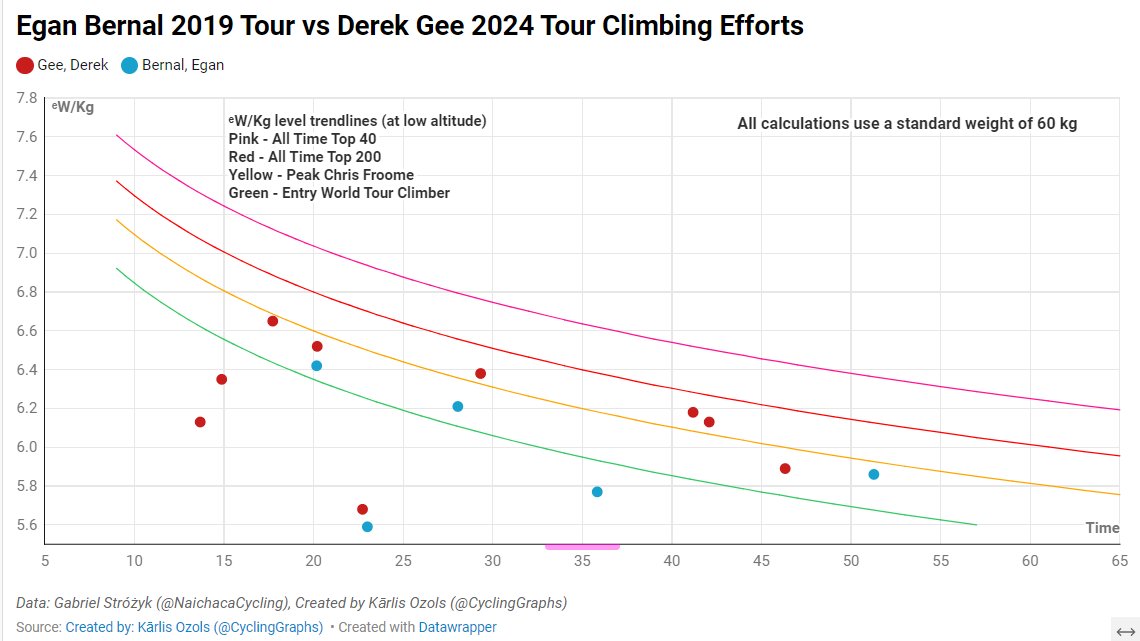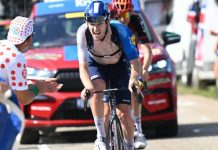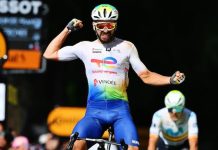Tadej Pogacar won his third Tour de France without any problem and the a big topic of conversation in recent weeks has been how the Slovenian and his rivals pulverized climbing records of riders from the dark days of cycling.
Tadej Pogacar set new records on climbs like San Luca, Galibier, Pla d’Adet, Isola 2000. Despite a seriously disrupted preparation due to a nasty crash in the spring, rival Jonas Vingegaard set a record on the Col de Pertus, when Pogacar suffered from what looked like a hunger crisis.
Plateau de Beille towers above all that. It has already been described as the greatest climbing achievement ever. Pogacar shattered the record of Marco Pantani from 1998 as he rode just under 40 minutes to complete the 16 kilometer climb with an average gradient of almost 8 percent. That was 3’44” faster than Pantani. Pogacar conquered the climb at an average speed of 23.5km/h.
The numbers two and three on the climb, Jonas Vingegaard and Remco Evenepoel, also rode faster than Pantani. Even more impressive is that the entire top 10 performed better than Lance Armstrong did on Plateau de Beille in 2004. To underline Pogacar’s amazing performance: his time was almost 6 minutes faster than that of Armstrong, the seven-time Tour winner who saw his victories taken away after confessions about doping use.
According to @CyclingGraphs on X, Derek Gee who finished 9th in 2024 Tour de France (+27min21s to Pogacar) would have won every Sky era Tour by more than 10 minutes. Egan Bernal in 2024 is around his 2019 level and he finished 29th in the 2024 Tour.

Comparison is complex. Weather, bicycles and asphalt quality can vary, as do competition conditions. Pogacar was able to follow Matteo Jorgenson and his leader Vingegaard for the first 11 kilometers of the climb.
Since Pantani, technological leaps have been made in bicycles, apparel and aerodynamics. However, doubts remain because even Pantani was riding using banned “fuel”.
How credible are the current performances then, and those of Pogacar? One thing that very few people talk about is the dark past of Pogacar’s team CEO Mauro Gianetti and team manager Matxin Fernandez who were working in cycling in the darkest era of the sport for teams like Mapei or Saunier Duval.
At the same time, Pogacar has a clean reputation. Moreover, he has performed at a consistent level since his debut and throughout the year, with 17 victories this season.
Teams hardly share any physical data due to privacy and competition. But it is more or less confirmed that Pogacar produced an average of 6.8 to 6.9 watts per kilo of body weight for 40 minutes on Plateau de Beille.
“That is at the limit of what is physiologically possible,” exercise scientist Jan Boone from Ghent University says. “For 40 minutes at 7 watts per kilo you have to achieve VO2 max values (which express how well a body can convert inhaled oxygen into energy) that have never been reported before.”
At the same time, Boone – who is also working for Lotto Dstny – calls the performance credible. Like Vingegaard and Evenepoel, Pogacar is an exceptional talent whose achievements are anything but out of the blue. In addition, young riders are scouted earlier and trained to become top riders.
“The decline in performance capacity has also become smaller due to evolution around recovery, sleep, nutrition and training plans,” says Boone. “And thanks to data collection, both riders and their trainers know their bodies. Now everything is done based on heart rate and wattage.”
An important criticism of Pogacar is that he rides too offensively and thus makes himself vulnerable to suspicious minds.
“Compared to today, we were almost amateurs when I rode my first Vuelta six years ago. Teams push each other forward in technology, nutrition, altitude training and training plans”, said Pogacar.
“I have had a hard time mentally following our nutritionist’s plans. It took me about four years,” said Jonas Vingegaard about the strict nutrition that cyclists must follow. “Today, better knowledge about nutrition allows riders to absorb more sugars by eating differently. But that poses physical challenges, with riders having to train their stomach and intestines to cope.














